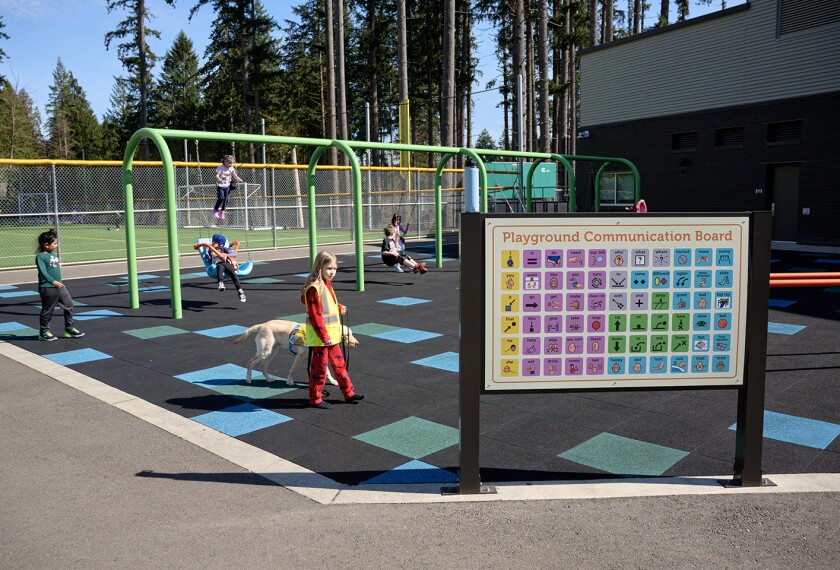The U.S. Department of Education today released final regulations to guide the creation of tests for students in special education who are capable of learning grade-level content, but not as quickly as their peers.
Currently, the only options available for such students are to take the general assessments that are given to all students, which may be too difficult, or tests intended for students with significant cognitive impairments, which are too easy. The new tests will allow a more accurate assessment of what these students know and how best to teach them, Deputy Secretary of Education Raymond J. Simon said during an afternoon press conference.
The tests may also allow some schools to make adequate yearly progress under the No Child Left Behind Act when they had not before. Up to 2 percent of students’ proficient and advanced scores on these particular tests, which the department calls “alternate assessments based on modified achievement standards,” may be counted when measuring AYP. Two percent of all students is equivalent to about 20 percent of students with disabilities.
The Education Department also allows up to 1 percent of all students in a state—equivalent to 10 percent of students with disabilities—to take a different type of alternate assessment and be counted as proficient for purposes of AYP. Those tests, which are the ones used with students with significant cognitive impairments, are less complex and comprehensive.
This testing flexibility was first announced in April 2005, with draft regulations released in December 2005. In the meantime, states were allowed to use a mathematical model to adjust their scores as if the policy were already in place. That flexibility will be allowed for the 2006-07 school year, but after that, if states want to continue using the model, they have to enter into a partnership with the Education Department to develop the “2 percent” tests, Mr. Simon said.
“We believe a state that has not done anything so far, should be able to do what we ask them to do over the next two school years,” Mr. Simon said. “Only those who participate with us in a meaningful way” can use the mathematical model, he said.
Content Important
The final regulations, like the draft version, also make it clear that out-of-level assessments would not be allowed to serve as appropriate tests for students in special education. So, a 6th grader who reads at a 3rd-grade level would not be allowed to take a test intended for younger students.
“The reason we’re taking that position here is we’re really trying to emphasize the importance of students getting access to grade-level content,” said Kerri L. Briggs, the acting assistant secretary for planning, evaluation, and policy for the Education Department.
However, the tests can still be easier than the tests given to the general student population, while reflecting grade-level content. Examples of changes in the tests include offering three choices on a multiple-choice test, instead of four; using math manipulatives to illustrate test answers; or allowing students to receive test questions in spoken word or pictures, in addition to print.
Some states already have begun offering such assessments to their students, Mr. Simon said. Though those tests haven’t gone through the department’s peer-review process, he said they can be used as a starting point for other states as they consider their own tests.
The response to the new regulations during a teleconference held today with state school chiefs was positive, Mr. Simon said. He said the state school leaders who have created tests told their colleagues that the tests “have given us information that we’ve needed” to improve education for students with disabilities, Mr. Simon said.
The department plans to launch an effort to assist states as they create the tests, including $21.1 million in grant funds for technical assistance, a meeting with the states scheduled for July, and monthly teleconferences.





